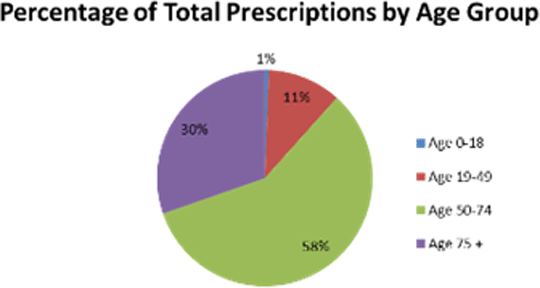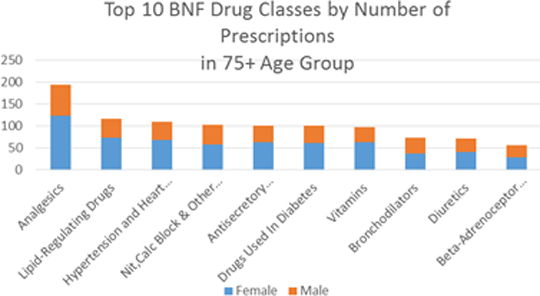Excessive Polypharmacy: Audit Of Repeat Prescriptions In A Large London General Practice
Polypharmacy is associated with an increased risk of prescribing error; patients on ten or more prescriptions (defined as ‘excessive polypharmacy’) have a 47% risk of error within one year (1) and more likely to have a high risk prescription (2). Therefore, in addition to disease-led medication reviews, a need exists to evaluate excessive polypharmacy in the GP setting. The first phase of this project is to first identify and categorise patients with excessive polypharmacy in the largest general practice within Camden, serving a population of 20,000 patients. The practice EMIS database identified 609 patients each with ten or more prescriptions. These 18,289 prescriptions were then matched against BNF categories and a list of exclusions developed in agreement with the practice partners. After applying the exclusions, 25 patients were excluded. It was, however, not possible to automatically detect which of these prescriptions are currently active. Therefore, the EMIS medications records of the 584 remaining patients were reviewed individually. A total of 427 patients were confirmed to have ten or more current, active, repeat prescriptions that do not include those within the exclusions category. The 5,321 prescriptions of the 427 patients were then examined using Microsoft Excel in order to fulfil the aims of the project. Of the 427 patients, 254 (59.5%) are female and 173 (40.5%) are male and are responsible for 58.6% and 41.4% of the total prescriptions respectively. There are three patients in the 0-18 age group with excessive polypharmacy. The majority of the prescriptions in this group are for allergy / atopy. Across the remaining age groups, “Analgesics” is the largest category of repeat prescriptions. In the 50-74 age group, “Drugs used in Diabetes” is the second largest category of prescriptions on repeat. In the 75+ age group, cardiovascular drugs account for the second, third and fourth top categories of prescriptions, equalling 20.3% of total prescriptions for this age group. Based on the epidemiology of heart disease, this may reflect ‘appropriate’ polypharmacy and mirror best practice prescribing. However, the high rate of “Analgesics” prescribing in this elderly population is worrying and potentially harmful.
The next phase of the project will build on published criteria (e.g. STOPP) to identify priority patients and invite them in for an extended appointment. The objective is to understand the patient’s needs as well as review medications from both disease and total prescription threshold perspectives. Polypharmacy can be appropriate and in line with best practice care for patients within specific disease area. However, the threshold perspective of excessive polypharmacy can yield valuable information regarding groups at risk of adverse events. This group may not fall within a common disease area; the threshold approach ensures that they are included in an over-arching medicines optimisation process. (1) Avery A et al (2012b).General Medical Council http://www.gmc-uk.org/about/research/12996 (2) Guthrie B et al (2011). BMJ 342: d3514.
|





